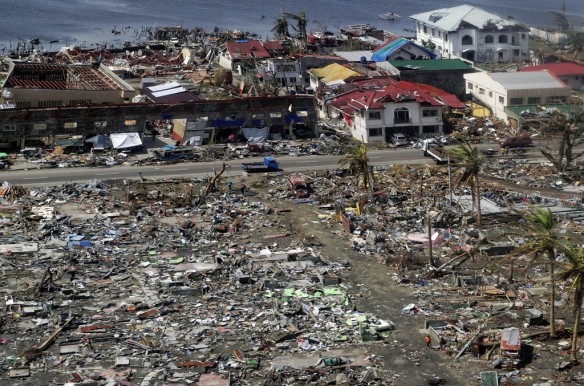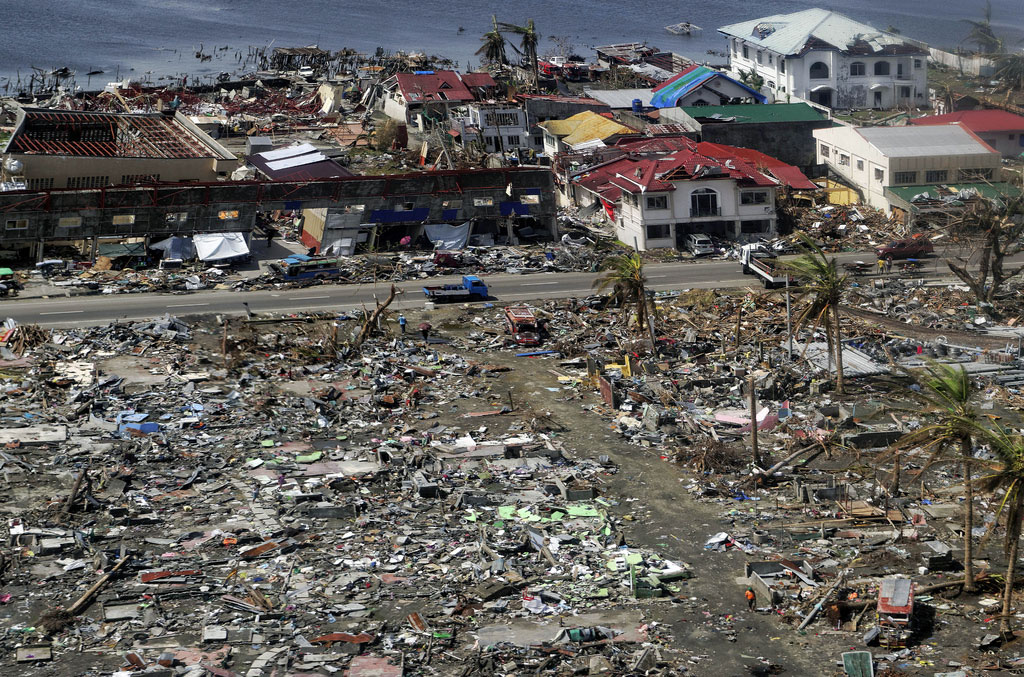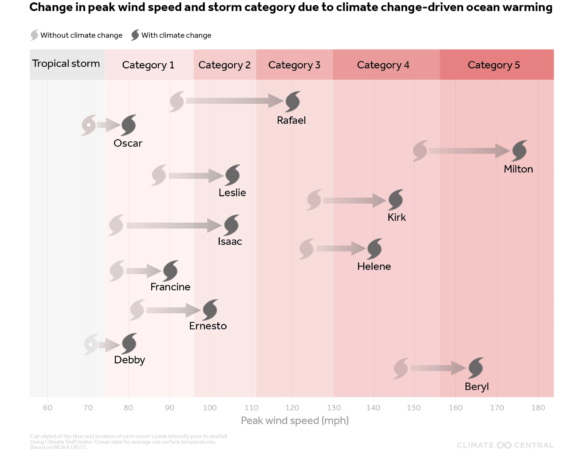
Tacloban city was the worst hit by Super Typhoon Haiyan, which devastated the central Philippines on November 8, 2013. Captions And Photo source: ©© International Labour
Excerpts;
In research of significance to the world’s expanding coastal populations, scientists have found that geology and infrastructure play key roles in determining whether aquifers that provide drinking water are inundated with seawater during a typhoon or hurricane and how long the contamination lasts.
In 2013, Typhoon Haiyan devastated the Philippines, killing more than 6,000 people and destroying nearly $3 billion worth of property. While the country is still recovering from the storm, researchers with The University of Texas at Austin have found that an aquifer on the island of Samar inundated with salt water by the storm surge could remain undrinkable for up to 10 years. But a second aquifer on the island that was also inundated has recovered much more quickly…
Typhoon Haiyan’s Deadly Surge Noted in Warsaw Talks, Climate Central (11-14-2013)
While Haiyan’s winds have garnered most of the headlines, reports from the hardest-hit areas now indicate that it was likely the massive storm surge that caused the most damage and greatest loss of life, particularly in Tacloban City, a city of 220,000…









